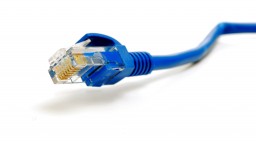The day came and went without much fanfare. I’m not talking about my recent birthday but the February 3rd 2011 “D-Day” when the Internet Assigned Numbers Authority released its 5 last octets (/8 blocks) to each Regional Internet Registry. For those of you in love with the simplicity of the IPv4 sequence, this is a sad time and you may be shrugging off internalizing the change. It’s time to face your demons, look IPv6 right in the face and say “Ok, I’m Ready. I will no longer ignore ICMP. I know you are better and use ICMPv6 for many critical functions. I love and appreciate you.” So what’s the deal with this new internet address? Does it just mean a longer number sequence or is there something more. Well, here’s the skinny. Read the following points well as they are your future.
- Better Header Format: Unlike its predecessor, IPv6 has a fixed header. It is more simplified than the IPv4 header, contains 2 128 bit addresses (a source and a destination), and has a fixed length of 40 bytes. Why is this important – faster processing! Any options usually managed within the IP address itself are now managed by extension headers which materialize after the header.
- 128 Bits: If you are not in the know, the 128 bit address basically means IPv6 should be the final iteration of the evolution of the IP address. Based on the structure of the address, there are literally trillions of combinations so the world should never be without IP again. Basically, 2 to the 32 power addresses can be created with IPv4 and 2 to the 128 power can be created with IPv6. This is also important for web based internet services that require multiple IP connections or static bridged connections to facilitate constant connectivity to the source. With more and more applications going to complete web and handheld “smartphone” integration, this 128 bit structure is a godsend.
- ICMPv6: This is like the old ICMP on steroids with much of the functionality already built in. With functions like Auto configuration, Secure Neighbor Discovery (SEND), Multicast Listener Discovery (MLD), and Multicast Router Discovery (MRD) add a new dimension to error reporting and diagnostic functions unheard of before.
- QoS: Give your router a glass of water and a towel, because it’s going to work a bit harder. The new headers will contain a label field which will identify packet flow for QoS management by your router.
- Looks: This is not really technically important but if you are curious what an IPv6 looks like, here is an example: 1828:9hg7:78a4:85a7:2323:34hh:1200:3231 – how about that? As a comparison, here is an IPv4 address 216.239.51.99 (look it up, it’s Google’s).

This is just an overview of the new format so please, due diligence protocols state that you should learn as much as you can about IPv6. If you are an IT director, your day of change is coming! Just be sure to embrace it. The new protocol will make any secure VPN you are setting up easier to build and deploy, it’s just the learning curve that may take a bit of patience.
